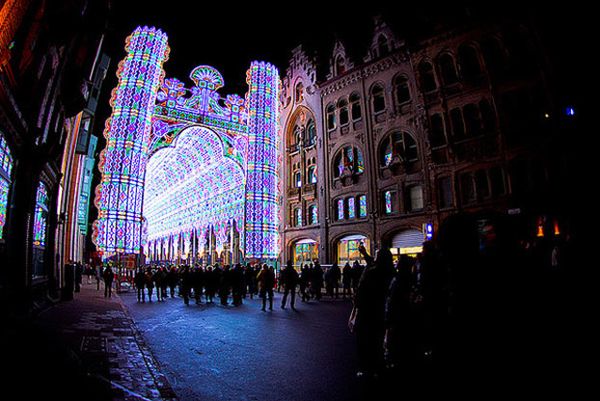The frequency of a light wave is how many waves move past a certain point during a set amount of time -- usually one second is used. Frequency is generally measured in Hertz, which are units of cycles per second. Color is the frequency of visible light, and it ranges from 430 trillion Hertz (which is red) to 750 trillion Hertz (which is violet). Waves can also go beyond and below those frequencies, but they're not visible to the human eye. For instance, radio waves are less than one billion Hertz; gamma rays are more than three billion billion Hertz.
Wave frequency is related to wave energy. Since all that waves really are is traveling energy, the more energy in a wave, the higher its frequency. The lower the frequency is, the less energy in the wave. Following the above examples, gamma rays have very high energy and radio waves are low-energy. When it comes to light waves, violet is the highest energy color and red is the lowest energy color. Related to the energy and frequency is the wavelength, or the distance between corresponding points on subsequent waves. You can measure wavelength from peak to peak or from trough to trough. Shorter waves move faster and have more energy, and longer waves travel more slowly and have less energy.
Advertisement
Aside from the different frequencies and lengths of light waves, they also have different speeds. In a vacuum, light waves move their fastest: 186,000 miles per second (300,000 kilometers per second). This is also the fastest that anything in the universe moves. But when light waves move through air, water or glass, they slow down. That's also when they bend and refract.


